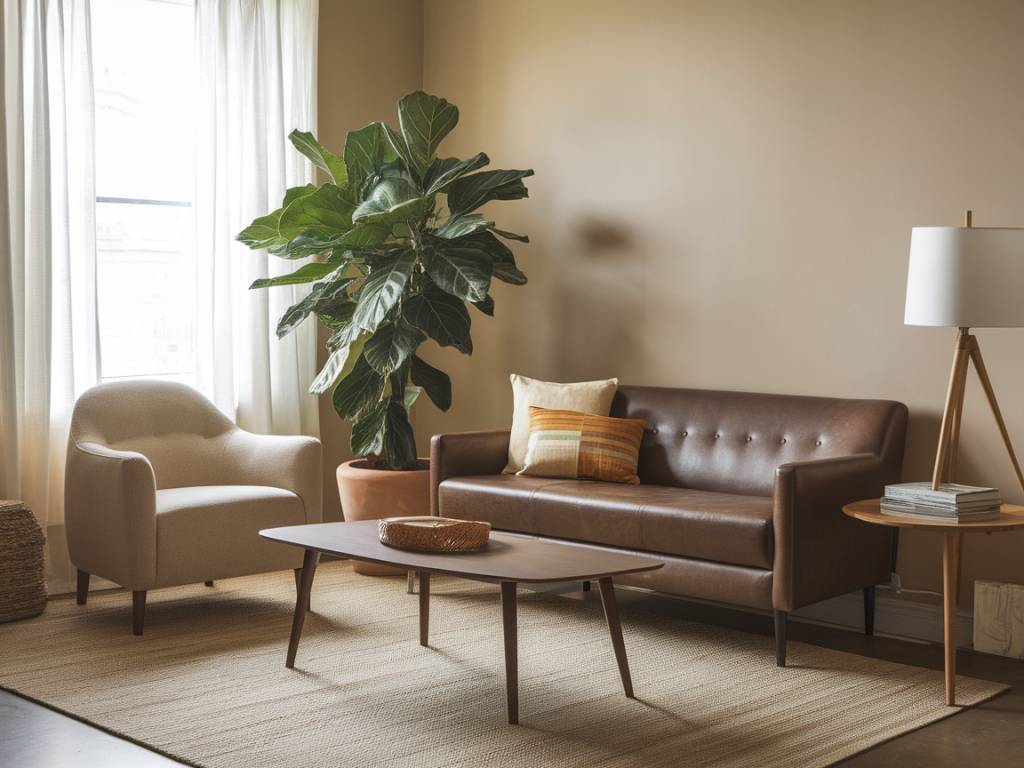Make Every Inch Count: The Art of Maximising Small Spaces
We’ve all been there—staring at a cramped living room, a narrow hallway, or a tiny bedroom, wondering how to make it work without sacrificing style or functionality. Small spaces might feel restrictive at first, but they have immense potential with a bit of creativity and clever planning. Let’s explore some practical, easy-to-implement ideas to transform even the tiniest of spaces into inviting oases of comfort and utility.
Think Vertical: Use Your Walls Wisely
When floor space is scarce, thinking vertically is your best ally. Those walls? They’re prime real estate waiting for action. Install floating shelves to hold books, plants, or decorative objects while keeping the floor area clear. Hooks or wall-mounted racks are ideal for coats, bags, or kitchen utensils. Even in bathrooms, a vertical shelf mounted above the toilet can store linens or toiletry essentials.
Want more drama? Try adding a floor-to-ceiling bookcase. It draws the eye upward, making the room feel taller. Bonus points if you paint it the same colour as your walls for a seamless and sophisticated look.
Multi-Functional Furniture Saves the Day
A coffee table might just be a coffee table—until it isn’t. Look for pieces that serve double duty. Think ottomans with hidden storage, daybeds that double as sofas, or dining tables with foldable leaves. A shelving unit could act as both storage and a room divider in open-plan spaces.
If you’re tight on budget, consider wood crates or baskets that can slide under the bed or couch. They’ll keep clutter out of sight while maintaining that clean, intentional vibe. The key here is versatility: invest in items that do more than one job to maximise value and floor space.
Let There Be Light
Light can dramatically transform how a room is perceived, making it feel larger, brighter, and more welcoming. If you lack natural light, layer your lighting sources. Combine overhead fixtures with table lamps, floor lamps, or wall sconces to create depth and minimise shadows.
Mirrors are another saviour for tight spaces. Strategically place large mirrors opposite windows to bounce natural light around the room. Mirrored furniture or even a mirror backsplash in the kitchen can go a long way in visually expanding the space without adding clutter.
Edit Ruthlessly: Adopt a Minimalist Mindset
One of the simplest ways to make small spaces work is to own less. Sounds harsh? Maybe. But decluttering isn’t just a trend; it’s a lifestyle. Adopt the “one in, one out” rule – for every new item you bring home, donate or discard one you no longer use.
Consider storage hacks like neatly folded KonMari-style clothes or stacking containers that utilise vertical cupboard space. Think of it as a game: how can you optimise what you already own while eliminating what you rarely use?
Optical Illusions with Colours and Patterns
Colour has an undeniable effect on how large or small a space appears. Neutral tones like whites, greys, and beiges reflect light, giving the illusion of more space. If you want to add some drama with darker shades or bold patterns, use them sparingly, like on an accent wall or small decor pieces.
As for patterns, remember this: small-scale prints are your best friend. Larger, busier prints can overwhelm a small room. Stripes, especially vertical ones, can elongate walls or furniture, creating the impression of height.
Zone Your Space Smartly
Even the smallest spaces can have distinct areas for different purposes if you zone them properly. Use area rugs to visually separate a living space from a work area. Arrange furniture in clusters instead of pushing everything against the walls. For example, a simple foldable screen can create privacy in a studio apartment or act as a lightweight room divider.
Wall decals or paints of varying shades can also signify different zones, visually distinguishing between relaxation, work, or dining areas while maintaining flow throughout the room.
Go Big with Small Decor
Here’s where you can break the rules a little. Even in compact spaces, don’t shy away from incorporating statement pieces. A large piece of artwork on the wall, a vintage armchair, or a dramatic pendant light can steal the show without adding clutter. Just remember to balance it with simplicity elsewhere in the room.
The same goes for plants. Indoor greenery breathes life and energy into tight spaces. Stick to easy-care plants like pothos or snake plants and use sleek planters to keep things modern and uncluttered.
Hidden Storage: Out of Sight, Out of Mind
Maximising storage is critical for small homes, but it’s equally important to keep it visually streamlined. Think bed frames with built-in drawers, coffee tables with compartments, or kitchen benches with hidden storage underneath. These pieces not only serve their primary function but also eliminate the need for extra shelving or chests taking up valuable space.
For smaller items like cables, chargers, or seasonal decorations, invest in attractive baskets or bins that double as decor when placed on open shelving. Keeping similar items grouped together also makes it easier to find what you need, fast.
Customise Where Possible
Off-the-shelf furniture doesn’t always cater to the unique challenges of small spaces. Custom-built solutions might require a higher upfront cost, but they pay dividends in terms of space-saving efficiency. Think built-in wardrobes, window seating with storage underneath, or a pull-down Murphy bed that frees up floor space during the day.
If built-ins aren’t in the budget, DIY hacks can work wonders. Modify Ikea furniture to better suit your needs or enlist the help of adhesive hooks to hang items behind doors and inside cupboards.
A Home That Works for You
At the end of the day, maximising small spaces is about making your home work for you and not the other way around. Personalisation is key—choose solutions that fit your lifestyle, aesthetic preferences, and the dynamics of your household. When every detail has a thoughtful function or brings joy, even the smallest of homes can feel like a palace.
